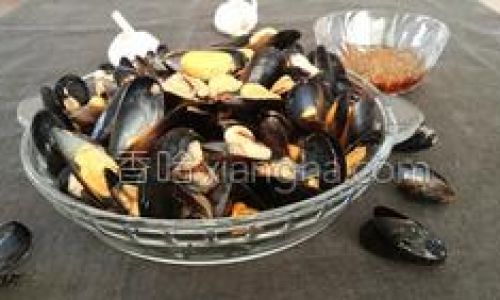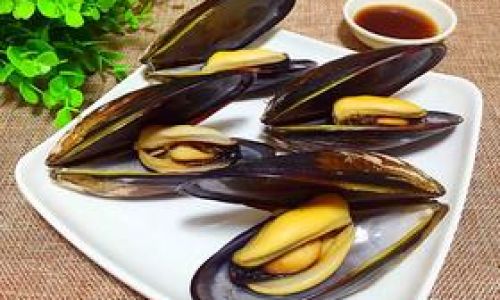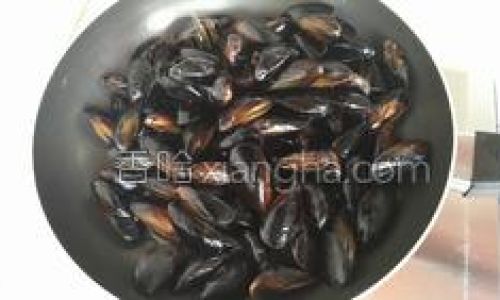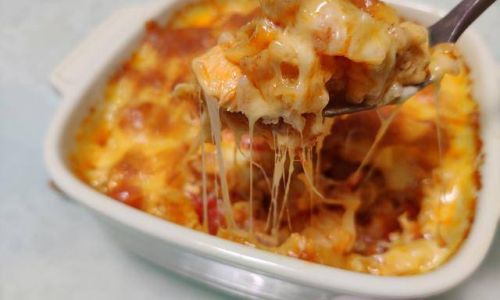Introduction
Blanched small mussels, known in Chinese cuisine as 白灼小海虹 (Bái zhuó xiǎo hǎi hóng), are a testament to the beauty of simplicity in cooking. This dish, rooted in coastal culinary traditions, celebrates the natural brininess and tender texture of fresh mussels while highlighting the elegance of minimalist preparation. The term 白灼 (bái zhuó) translates to “blanched in clear water,” a technique that involves briefly cooking seafood in boiling liquid to retain its original flavors, colors, and nutrients. Paired with aromatic garnishes and a zesty dipping sauce, this dish is a staple at seafood restaurants and home tables alike, especially in regions like Zhejiang, Fujian, and Guangdong, where mussels thrive in cold, pristine waters.
In this comprehensive guide, we will explore the intricacies of preparing 白灼小海虹, from selecting the freshest mussels to mastering the blanching process. Whether you are a seasoned home cook or a curious novice, this article will equip you with the knowledge to recreate this delicate delicacy with confidence and precision.
Ingredients and Tools
Before diving into the cooking process, gathering the right ingredients and tools is essential. Here’s what you’ll need:

For the Mussels:
- 5 kg (3.3 lbs) fresh small mussels (preferably live, with tightly closed shells)
- 2 liters (8.5 cups) cold water (for cleaning)
- 1 tablespoon sea salt (for cleaning)
For Blanching:
- 4 liters (17 cups) water
- 4 slices fresh ginger (peeled)
- 4 green onions, cut into 5 cm (2-inch) segments
- 1 tablespoon Shaoxing wine (or dry sherry)
For the Dipping Sauce:
- 3 tablespoons light soy sauce
- 1 tablespoon Chinese black vinegar (or balsamic vinegar)
- 1 teaspoon sesame oil
- 1 garlic clove, minced
- 1 red chili, thinly sliced (optional, for heat)
- 1 teaspoon fresh cilantro, chopped
- 1 teaspoon sugar (optional, to balance acidity)
Tools:
- Large colander or sieve
- Large stockpot with lid
- Slotted spoon or tongs
- Small mixing bowl (for sauce)
- Kitchen scissors or brush (for cleaning mussels)
Step-by-Step Preparation
Cleaning and Preparing the Mussels
The success of this dish hinges on the freshness and cleanliness of the mussels. Follow these steps meticulously:
-
Inspect for Freshness: Discard any mussels with cracked shells or those that remain open when tapped gently. A live mussel will close its shell when disturbed.
-
Debeard: Most cultivated mussels are debearded, but if yours retain the fibrous “beard” (byssal threads), grasp it firmly and pull it toward the hinge of the shell to remove it. Use kitchen scissors if necessary.
-
Scrub Thoroughly: Place the mussels in a large basin of cold water mixed with sea salt. Scrub each shell with a stiff brush to remove grit, barnacles, or seaweed. Rinse under cold running water until the water runs clear.
-
Soak (Optional): For extra sand removal, soak the mussels in salted water for 20–30 minutes. This encourages them to expel any remaining grit.
Preparing the Aromatics
The blanching liquid is infused with ginger and green onions to neutralize any seafood腥味 (xīng wèi, or “fishy odor”) and elevate the mussels’ natural sweetness:
-
Ginger: Peel the ginger using a spoon (to minimize waste) and slice it into thin, even rounds. Ginger not only imparts a subtle warmth but also aids digestion.

-
Green Onions: Trim the roots and any wilted green tops. Cut the white and light green parts into 5 cm segments. Reserve the dark green tops for garnish, if desired.
Blanching the Mussels
Blanching is a delicate dance of timing and temperature. Follow these steps for perfectly cooked mussels:
-
Boil the Water: Fill the stockpot with 4 liters of water. Add the ginger slices, green onion segments, and Shaoxing wine. Bring to a rolling boil over high heat. The wine adds a layer of complexity while helping to tenderize the mussels.
-
Blanch in Batches: Add the mussels to the boiling water in two batches to avoid overcrowding, which can lower the water temperature and result in uneven cooking. Stir gently with a slotted spoon to ensure even exposure to heat.
-
Monitor Cooking Time: Blanch the mussels for 2–3 minutes, or until the shells open fully. Overcooking will render them rubbery, so act swiftly. As soon as the shells gap, use the slotted spoon to transfer them to a colander. Discard any mussels that remain closed—these are unsafe to eat.
-
Shock with Cold Water (Optional): For a refreshingly crisp texture, rinse the blanched mussels under cold running water. This step halts the cooking process and helps retain their plumpness.
Serving and Presentation
The visual appeal of 白灼小海虹 is as important as its flavor. Presentation elevates the dining experience:
-
Arrange Artfully: Transfer the mussels to a serving platter, discarding any empty shells. Nestle them in a single layer to showcase their glossy shells.
-
Garnish: Sprinkle with reserved green onion tops, cilantro, and red chili slices for a pop of color. Drizzle lightly with sesame oil for sheen.
-
Serve with Dipping Sauce: Present the sauce in a small bowl alongside the mussels. Encourage diners to dip the mussels into the sauce or spoon it over the shellfish.
Tips for Perfect Blanched Mussels
-
Timing is Everything: Mussels cook rapidly. Overblanching by even 30 seconds can turn them tough. Start checking at the 2-minute mark.

-
Saltwater Soak Trick: If mussels are particularly sandy, add a tablespoon of cornstarch to the soaking water. The starch helps dislodge grit.
-
Repurposing the Broth: The flavorful blanching liquid, strained of solids, makes an excellent base for seafood soup or risotto.
-
Storage: Consume blanched mussels immediately for the best texture. Leftovers can be stored in an airtight container for up to 24 hours, though they will lose some tenderness.
Variations and Pairings
-
Spicy Twist: Add a teaspoon of Sichuan peppercorns or doubanjiang (chili bean paste) to the blanching liquid for a numbing heat.
-
Herb-Infused Sauce: Substitute cilantro with Thai basil or mint in the dipping sauce for a Southeast Asian flair.
-
Citrus Zest: Grate lime zest over the mussels before serving for a bright, aromatic finish.
-
Beverage Pairings: Pair with a crisp Sauvignon Blanc, a light lager, or chrysanthemum tea to balance the dish’s brininess.
Conclusion
白灼小海虹 is more than a dish—it’s a celebration of the ocean’s bounty, brought to life through the alchemy of fire and water. By honoring the mussels’ inherent flavors and adhering to precise techniques, even novice cooks can achieve restaurant-quality results. This dish invites connection, whether shared with loved ones around a bustling table or savored in quiet contemplation. So, the next time you crave the taste of the sea, let this guide be your compass. With practice, you’ll find that simplicity, when executed with care, is anything but ordinary.
Final Word
Cooking 白灼小海虹 is an exercise in mindfulness. It demands patience, attention to detail, and a reverence for ingredients. As you master this recipe, you’ll not only gain a culinary skill but also a deeper appreciation for the art of letting ingredients shine. Bon appétit!





0 comments